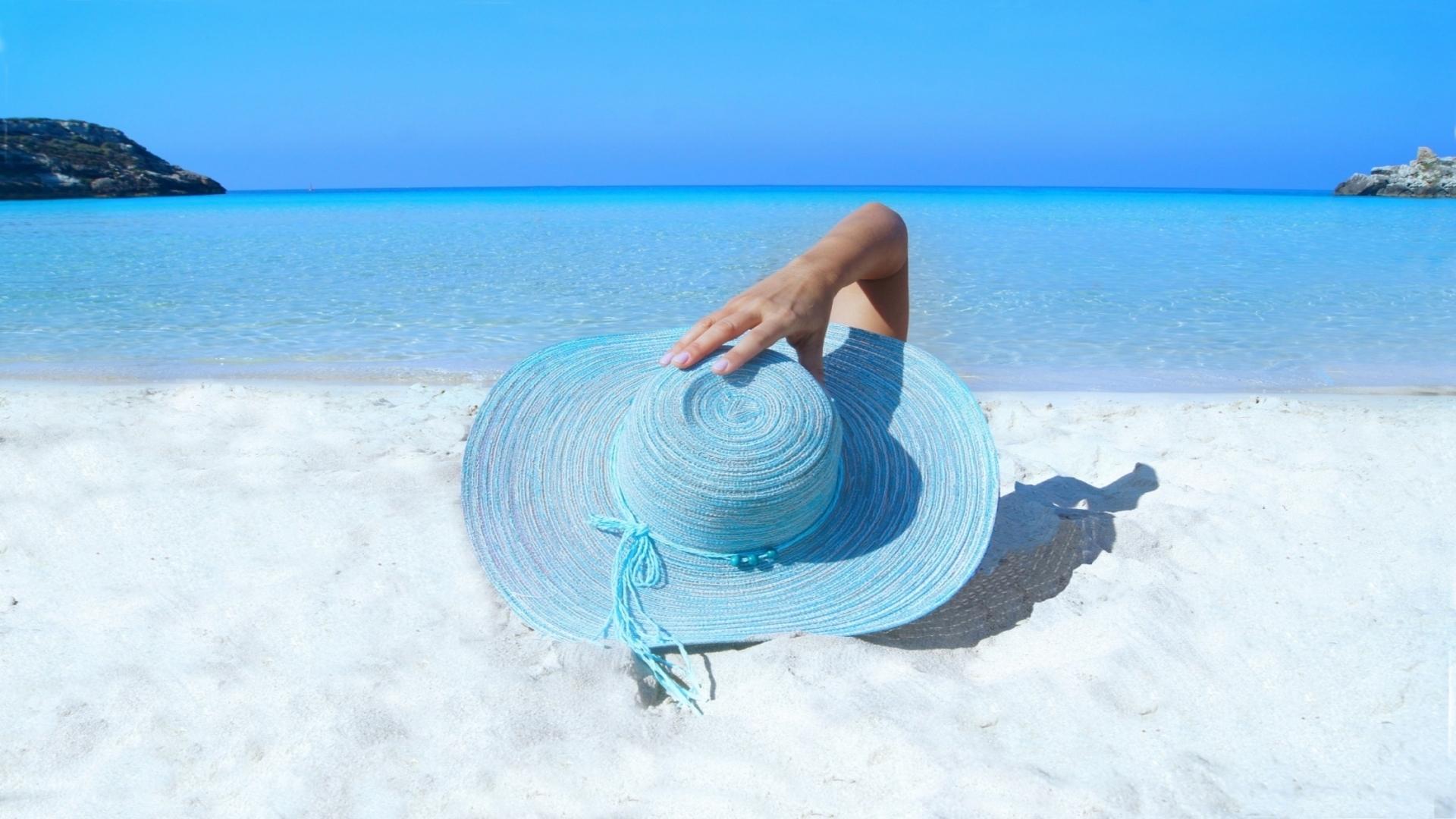Vitiligo sufferers are more susceptible to sunburn because their lesions lack the natural protection from the sun's rays which melanin provides to the rest of their skin. The areas most at risk are those where the skin is thinner such as eyelids, nose, neck, décolleté and the dorsal surfaces of the hands. Sunburns in these areas, therefore, in addition to being painful, can also cause lesions to increase in size as well as bring about the appearance of new lesions in some patients due to the Koebner phenomenon.
Furthermore sunburn, according to dermatologists, can increase the risk of skin cancers over time. Not surprisingly vitiligo patients and especially their parents are concerned about their vacations, especially when by the sea. The problem is that research studies do not seem to support this view.
Dr. James Nordlund, a reputable vitiligo practitioner, concluded that a large number of vitiligo patients did not show skin cancers in the affected areas but rather in the healthy parts of their skin, therefore the loss of pigment could not be considered as their cause.
Dr. Nordlund also found that vitiligo patients exposed to intense sunlight in Africa developed cancer rarely, while patients with albinism exposed to the same amount of sunlight often had multiple cancers in their skin (a disease completely different from vitiligo due to protein deficiency). Since he did not manage to substantiate this, it remained an empirical finding.
In another study conducted in the Netherlands, a controlled comparison showed that vitiligo patients exhibited skin cancer at a much lower rate than their “healthy” counterparts. It has been statistically proven that skin cancers (including melanoma) were reported 3 times less by vitiligo patients than their “healthy” counterparts, suggesting thus that vitiligo patients are relatively better protected from skin cancer.
This lower risk was not simply due to the lesser sun exposure or the increased and diligent use of sunscreen. So how could it be explained? Unfortunately, researchers did not come up with any concrete conclusions.
There are however some interesting new facts. Recent studies on the genetics of vitiligo revealed that the genes that increase the risk of vitiligo simultaneously reduce the risk of melanoma and vice versa. This is important because vitiligo occurs when the immune system kills normal melanocytes in the skin, resulting in the appearance of white spots without pigment. Therefore, if vitiligo patients have a hyperactive immune system that kills normal melanocytes, it can be assumed that the immune system is able to destroy anomalous melanoma cells.
It, therefore, becomes necessary to clarify the following: it does not mean that those who suffer from vitiligo will not be affected by skin cancer. The fact that vitiligo sufferers during the trials exhibited a lesser risk of melanoma does not mean that they will never develop it.
So how must vitiligo patients deal with the sun, especially during the summer months?
The appearance of the vitiligo should not prevent you from taking your seaside or mountain vacation. Sunbathing, however, is generally not the best way to spend your time. It is particularly important to avoid sun exposure from 10 am to 4 pm (especially children). Also, sand and water (as well as snow) can reflect up to 85% of the sun's rays. Even in the shade, you can absorb up to 50% of sunlight through reflection.
Children should avoid exposure to the sun. They have to wear a hat, shirt, glasses, sunscreen or UV-protective clothing, which is an easy way to protect your skin from the sun if you want to avoid the chemical ingredients of sunscreen. These clothes are rated by UPF (Ultraviolet Protection Factor). A garment with UPF 50 will block 98% of all UVA and UVB rays. Such protective clothing is available on the market for men, women, and children, as well as protective gloves and hats.
How can we ensure that sunscreen offers us adequate sun protection?
- Choose a sunscreen product that contains UVA I, UVA II, UVB and IR filters.
- You should also make sure that the sun protection product is water resistant or contains waterproof filters if you go to the sea keeping in mind that the sun can penetrate water to a depth of up to 10 meters.
- The choice of your sunscreen should be based on your phototype, given that small phototypes are more likely to burn than Mediterranean phototypes (3 and 4) which are more resilient.
- The effectiveness of a dermatological product depends on its proper application. The amount that gives you the right protection is one that gives uniform coverage to all exposed areas (as per manufacturers guidelines 2mg per cm²).
- You should also understand that choosing a sunscreen product with a higher protection factor does not provide you with constant sun protection and should be re-applied at least every 2 hours or every hour if sweating, swimming, etc. The first layer should be applied 20 minutes before going out in the sun and then re-applied to the face and all exposed parts of the body every 2 hours even if you’re in the city or under cloudy conditions.
Finally, in addition to protecting your skin from severe sunburn, sunscreen will help keep areas not affected by vitiligo less dark, thus helping you reduce the contrast between very dark (or sunburned) areas and vitiligo spots - something which could, in turn, trigger the physical-psychological phase of vitiligo development.
Have a wonderful summer!
Sources:
Pearl Grimes, Vitiligo Support International, https://www.vitiligosupport.org/faq.cfm
John E. Harris, “Speaking of Vitiligo”, http://www.umassmed.edu/vitiligo/blog/blog-posts1/2014/07/i-have-vitiligo-will-i-get-skin-cancer/
The Vitiligo Society www.vitiligosociety.org.uk




